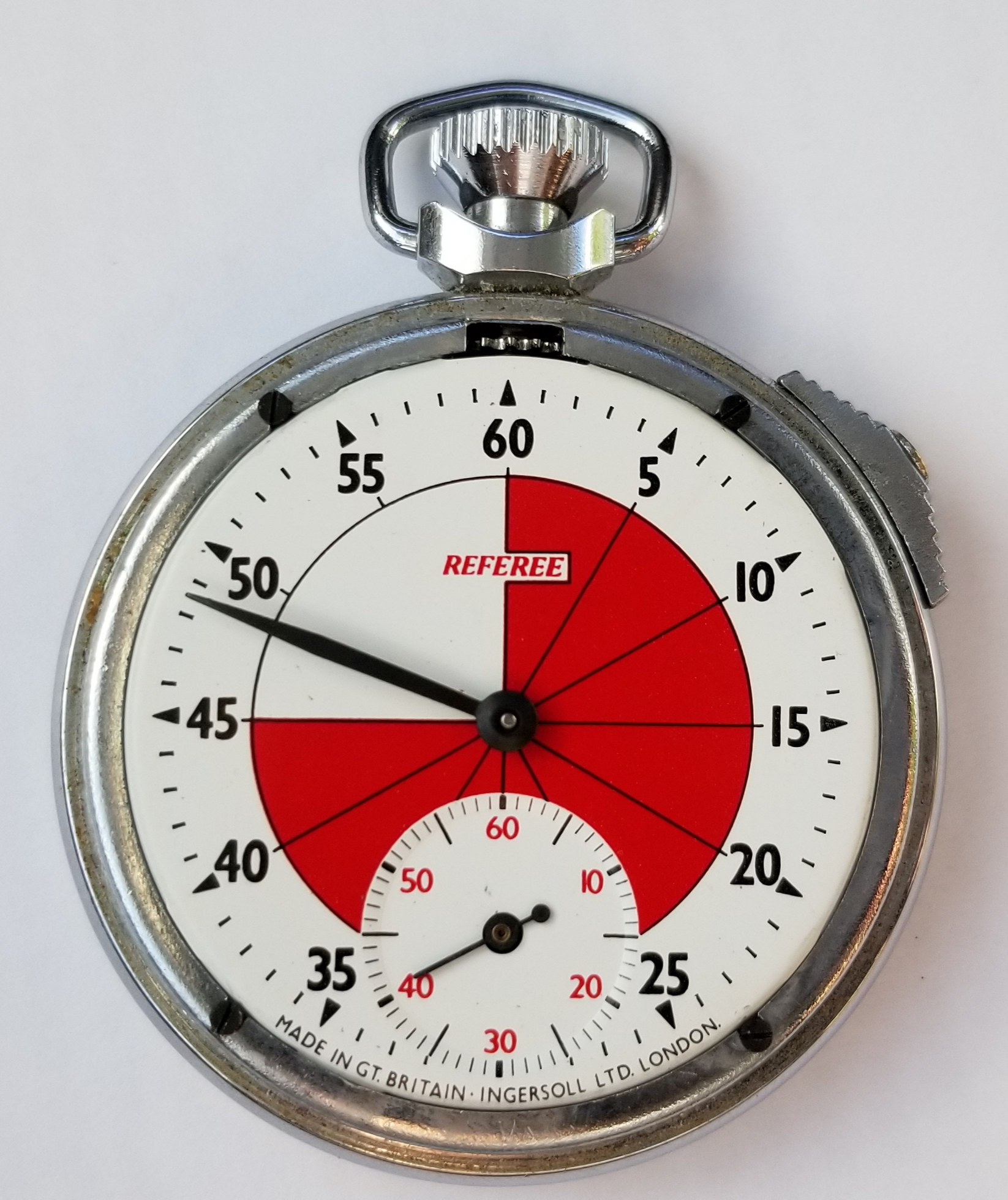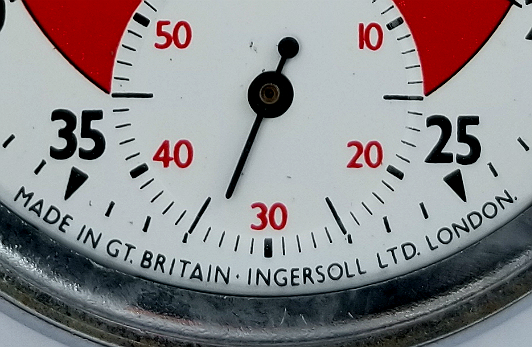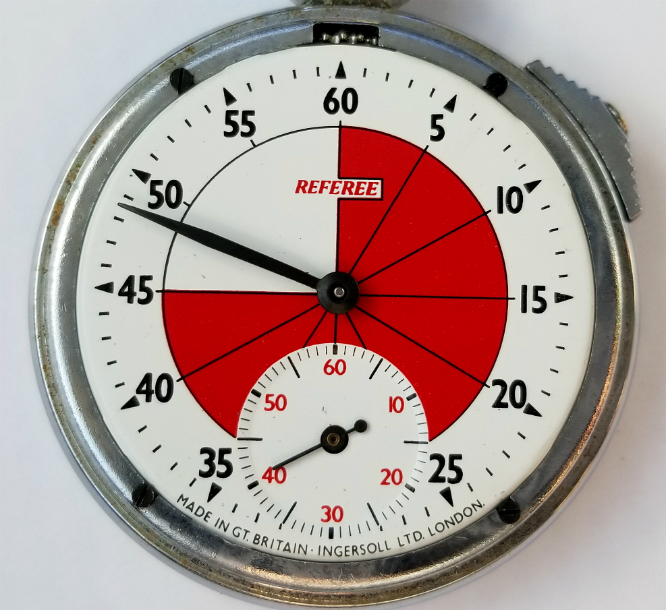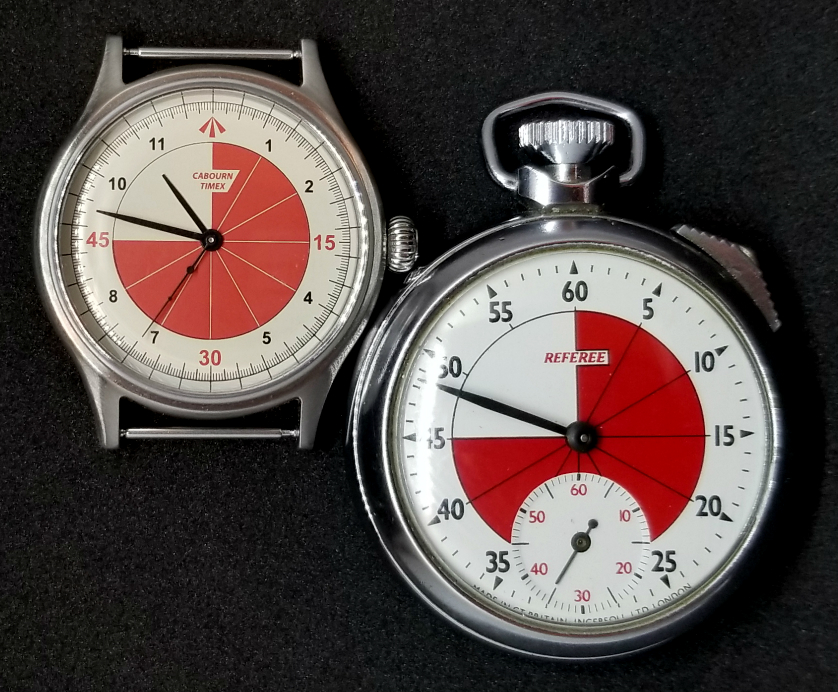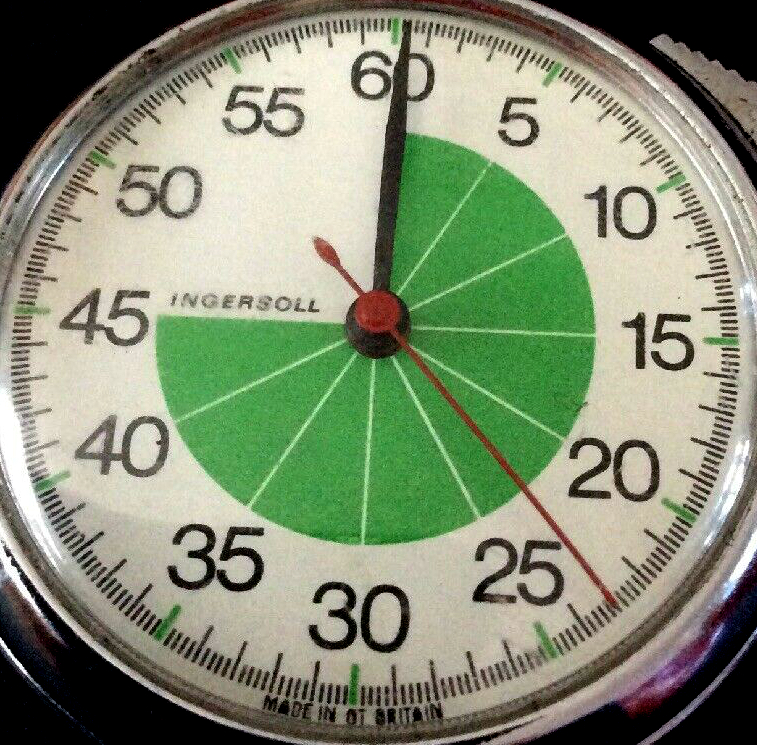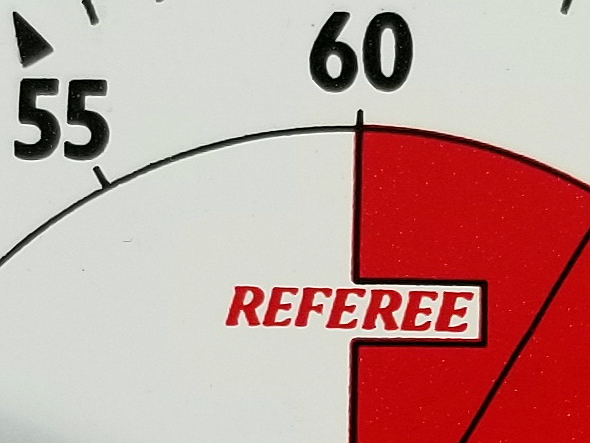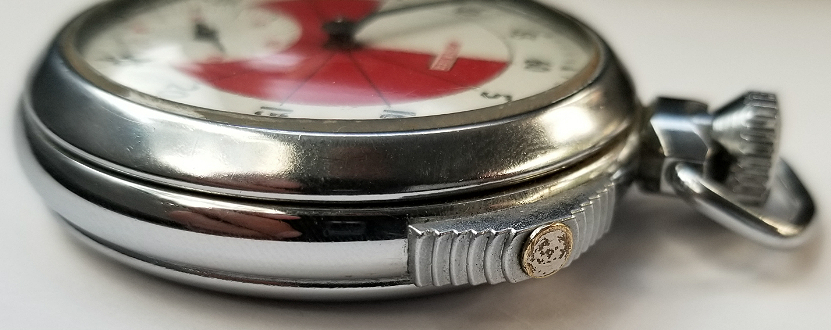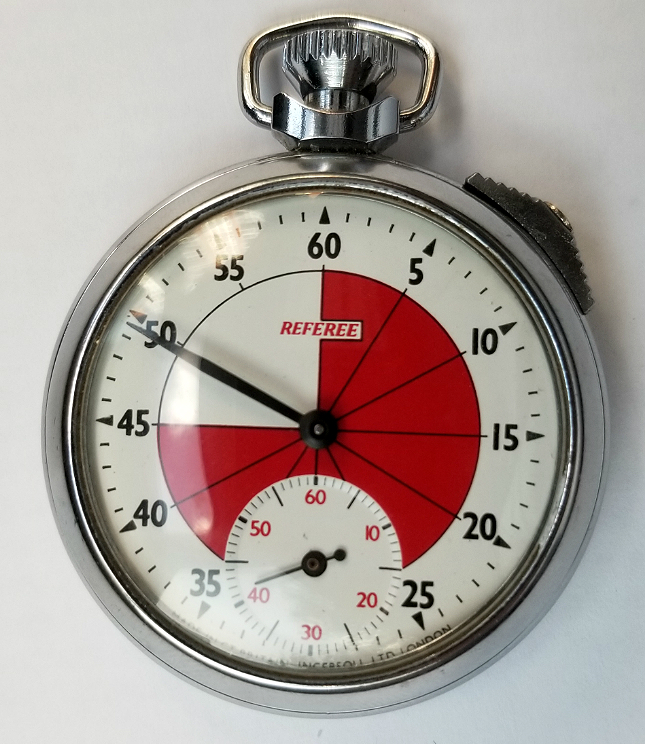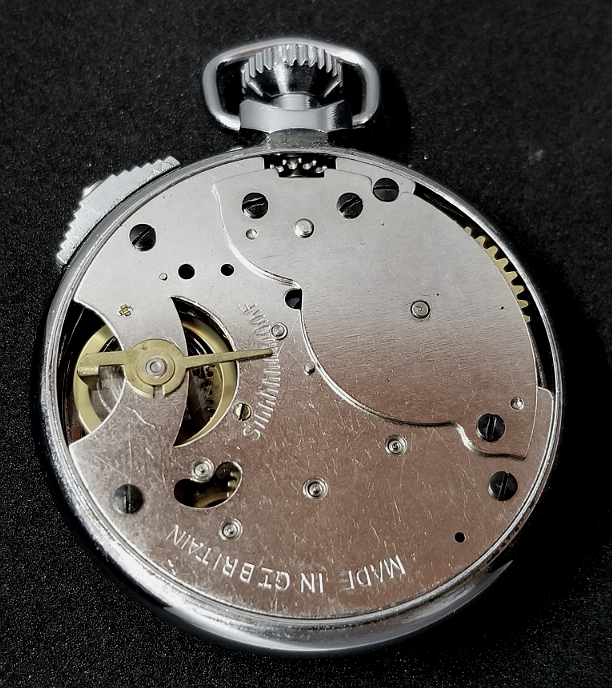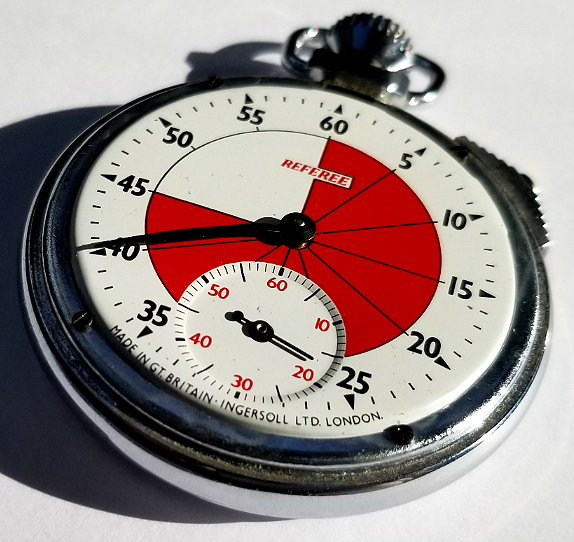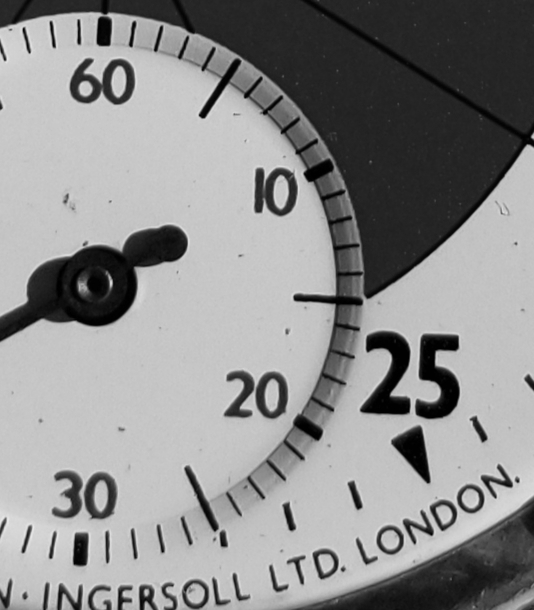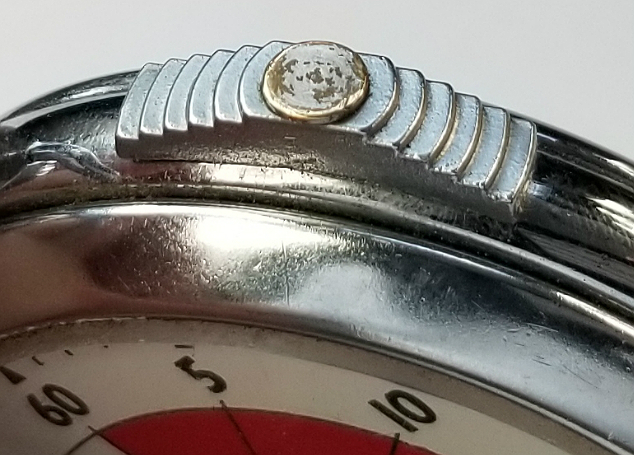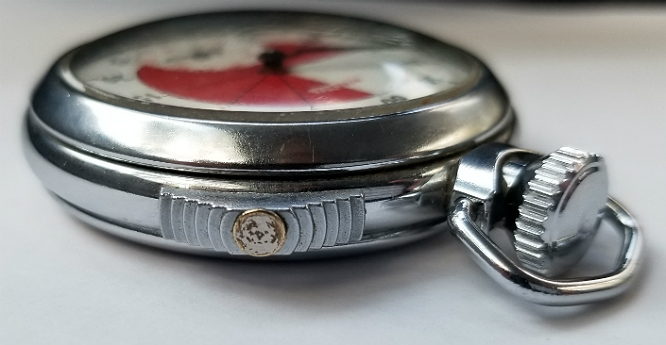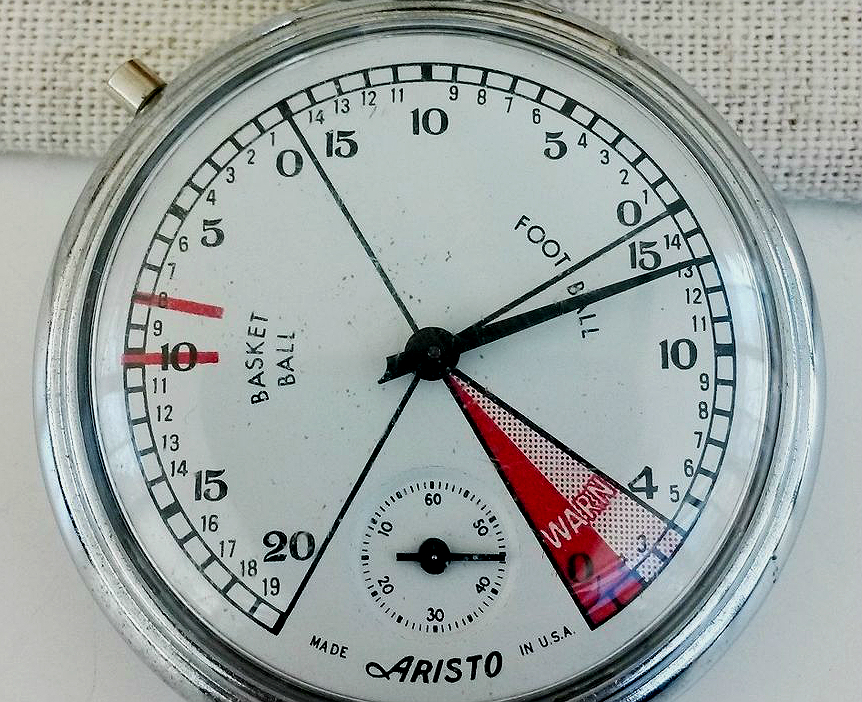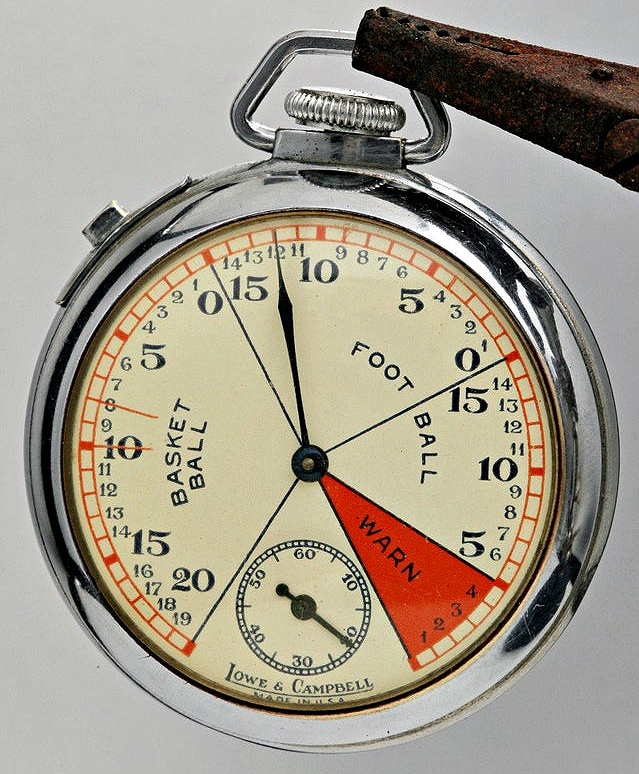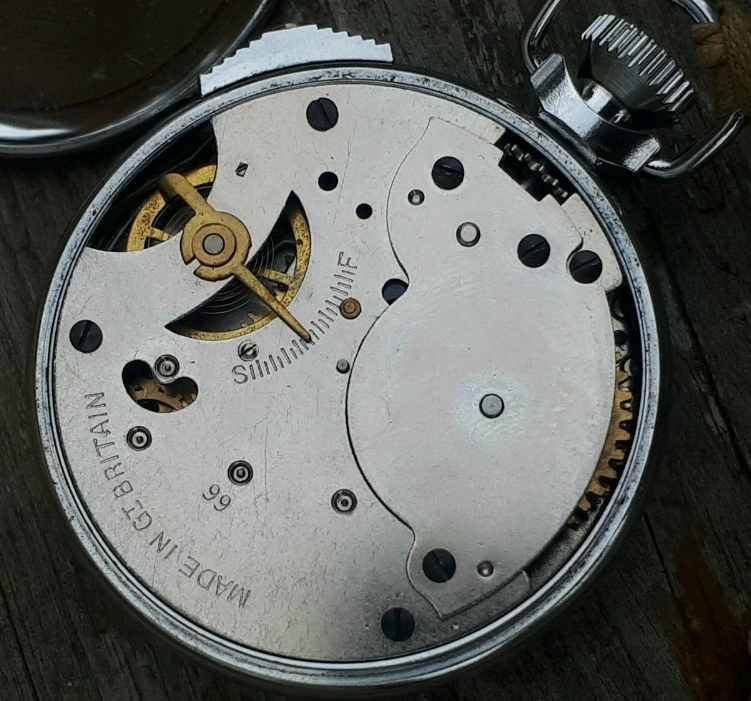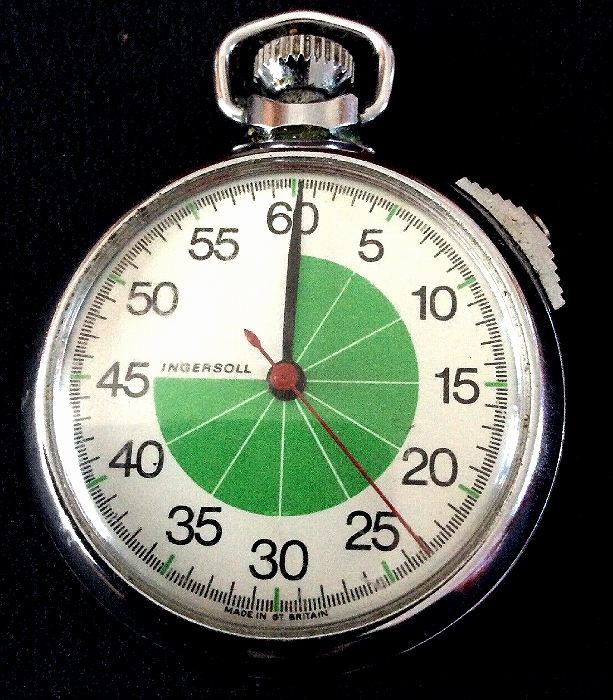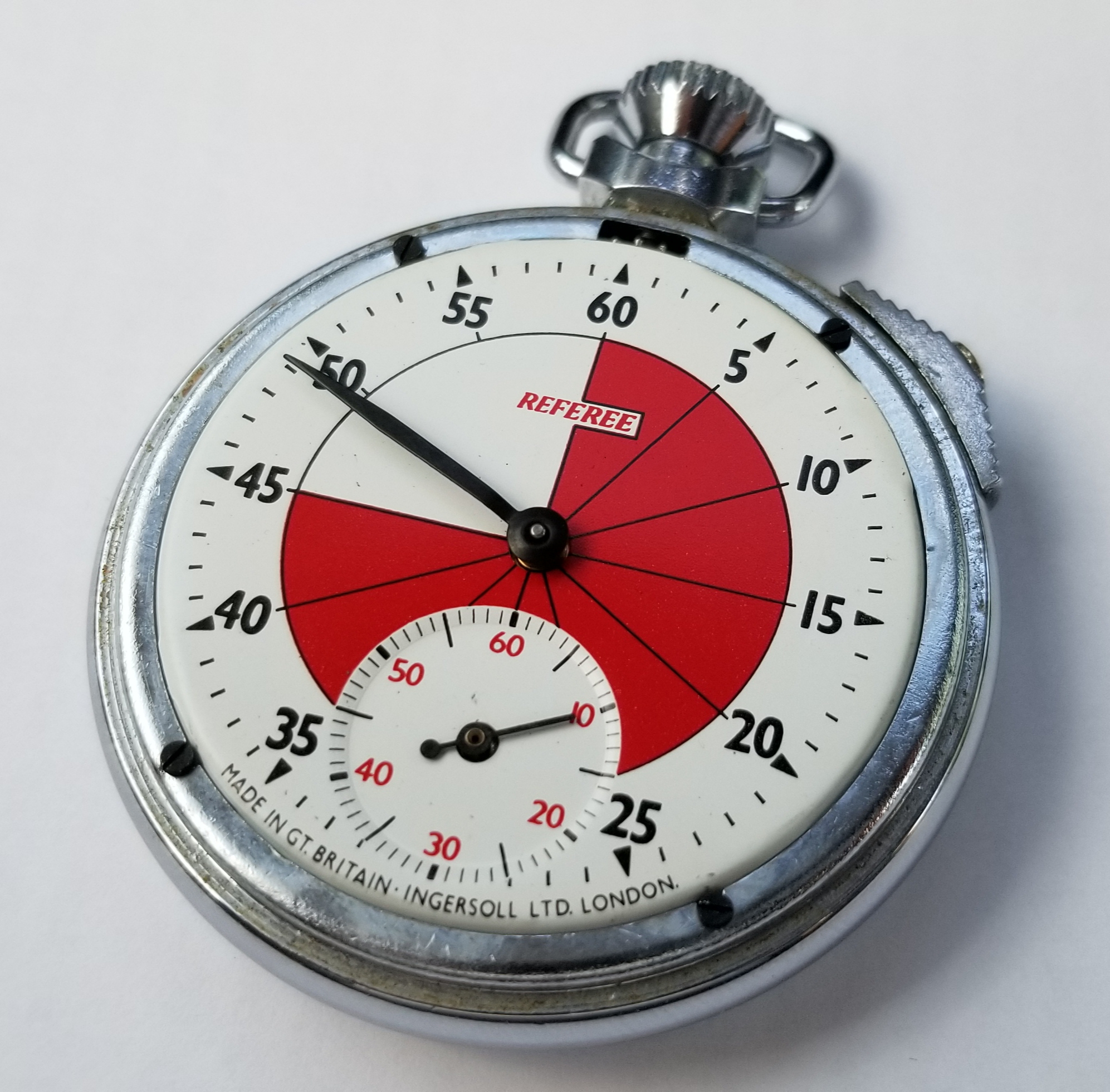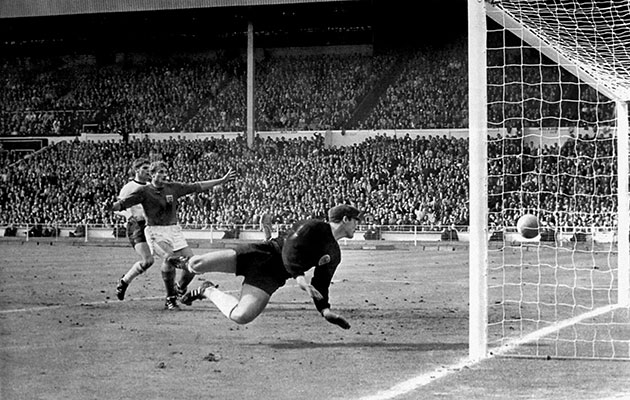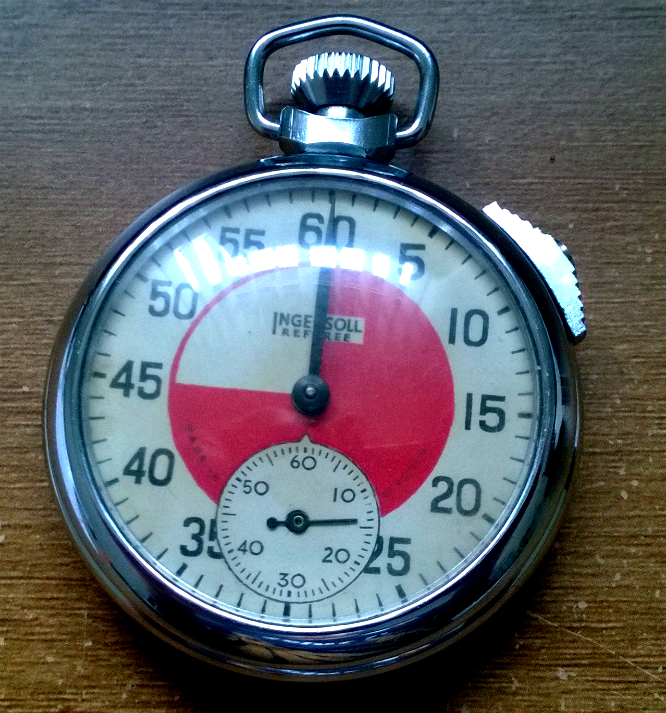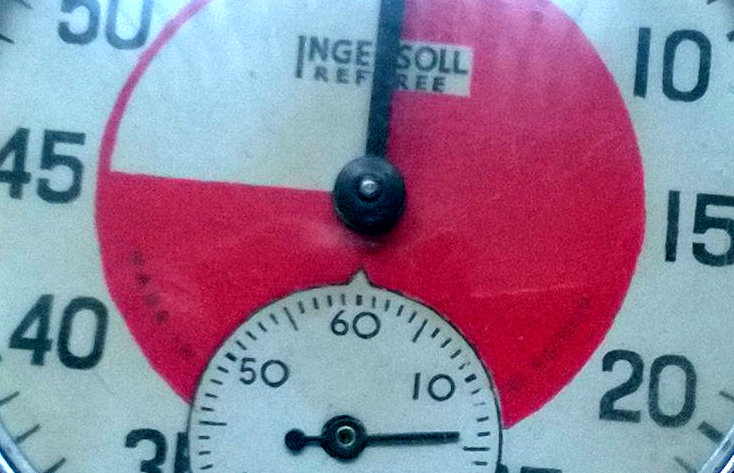1950s Ingersoll Football Referee's Timer / Stopwatch
Hello, this is Alan. My contact information is below, at the bottom of the page. As always, thanks for reading these pages. I hope you will like it.
Here is a 1950s timer in the form of a stopwatch, from Ingersoll. It is designed to be for referees of the game of football (soccer). The above pic, like most from this pave, are with the crystal and bezel removed, so as to show the dial more clearly.
end/
The watch was made by Ingersoll Ltd, London, made in Great Britain, as shown here printed at the bottom of the dial. The "Ingersoll" name/brand has a long history, in the US, UK, elsewhere, including bankruptcy, etc, and the history is beyond the scope of this review.
But Wikipedia has this: "After the Second World War, the British company, Ingersoll Ltd, joined with Smiths Industries Ltd and Vickers Armstrong in setting up the Anglo-Celtic Company Ltd on the Ynyscedwyn estate." Ynyscedwyn is a village in Wales, UK, where 30 million watches were made between 1946 and 1980. I'm virtually certain this watch is one of them.
During this same time frame US TIME / UK TIME / TIMEX made watches in Dundee, Scotland. There are some US/UK TIME watches with the brand name "Ingersoll" on the dial, especially Mickey Mouse type watches. I am not sure the relationship, if any, between the US TIME Ingersoll-branded watches, and the ones like this sport timer that say Ingersoll Ltd, London. They may be totally separate.
Let's take a good look at the dial. There is high contrast, white, black and a kind of "dark orange." The most notable feature is the 3/4 "color blocking" in dark orange, to demarcate a 45 minute interval. A football match is of two equal halves, each half lasting 45 minutes of regulation play. The timer allows the referee to keep track of how much time has elapsed, in the half. You can see in the 45 minute block, black lines divide it into 5 minute intervals. At the outer dial, minutes are marked by 5 minute increments, in simple lettering, with an adjacent black arrow. A single minute hand is present; as this is a timer, and not a "watch," there is no hour hand. A subsidiary seconds hand/dial is present at the 30 minute position.
Shows the 1950s Ingersoll timer alongside a June 2019 wristwatch from TIMEX in collaboration with British designer Nigel Cabourn. Here is a link to a review of that wristwatch. Nigel wanted to design a wristwatch that recalled his boyhood love of the game of football, and chose to use football timers from the era of his youth (1950s) as inspiration. You can see how much of his watch draws from the Ingersoll, including the "notch" where the word REFEREE is printed on the timer; on the wristwatch, CABOURN TIMEX is in place of REFEREE, but employs the same notch effect, and also uses italics lettering.
The color blocking for the 45 minutes is complete, in the wristwatch, but interrupted in the timer, because of the seconds dial. But in the below timer, also from Ingersoll (probably later) a center seconds hand is used, and the green color blocking is complete. Note that, like the wristwatch, the green sector is subdivided into 5 minute segments by white lines; in the orange colored timer, black lines are used. Therefore it appears very likely that not only was the orange timer used as inspiration for the wristwatch design, but this green one as well. [I now have this watch! Click here for review.]
Along the side of the case in about the 2 o'clock position, there is a button that slides to turn off the movement, when the referee needs to stop the clock. Injuries, penalties, etc. Sliding it to "off" shuts off the entire going train of the watch, the seconds hand stops ticking, and time remains where it was until the referee slides it back to "on."
Here is a pic with the crystal and bezel in place. Crystal had some scratches, which buffed out easily. But it also had acquired a slight yellowish color, that no amount of buffing can remove, as the plastic itself is discolored. Looks more evident in these huge photos, but in real use, it's not noticeable.
Opening up the back reveals the movement. Typical inexpensive movement, likely unjewewelled, not highly finished. Like many of these cheap watches, it's keeping time, running without problems after decades of likely zero service or cleaning.
Here is a short movie of the ticking movement, 7 seconds. Sound on, if you want to hear the ticking (loud ticking, generally hallmark of a cheap movement.) Not well shown here, but there is a small "foot" along the inside of the case, attached to the on/off button. Sliding the button toward the balance will cause the "foot" to jam up against the balance wheel, stopping the movement.
Timer, in direct sunlight. You can see the shadow cast along the right edge of the subsidiary seconds dial, showing how it's slightly recessed compared to the rest of the dial. Below, different angle of the photo, but also in the sun, with the edge shadow.
Another look at the on-off sliding button.
Just for fun, here are some pics of other sports timing devices. These are NOT my watches. I will wrap up this page, below, with a few more pics of the Ingersoll, and some final comments.
England has won the World Cup exactly once, in 1966.
This concludes my review of this Ingersoll football referee's timer. I have called this 1950s, but I'm not exactly sure of the date. Does anyone know? It is an interesting item, functionally, mechanically and also aesthetically. Don't miss the wristwatch inspired by this timer, and likely others, the Nigel Cabourn x TIMEX June 2019 wristwatch, reviewed here.
Thank you for reading. I hope you will like it.
Alan
Contact:
Website: Alan's Vintage Watches
Above: this is similar in some ways to mine, but is probably earlier. I like the design a lot, actually better than mine!
